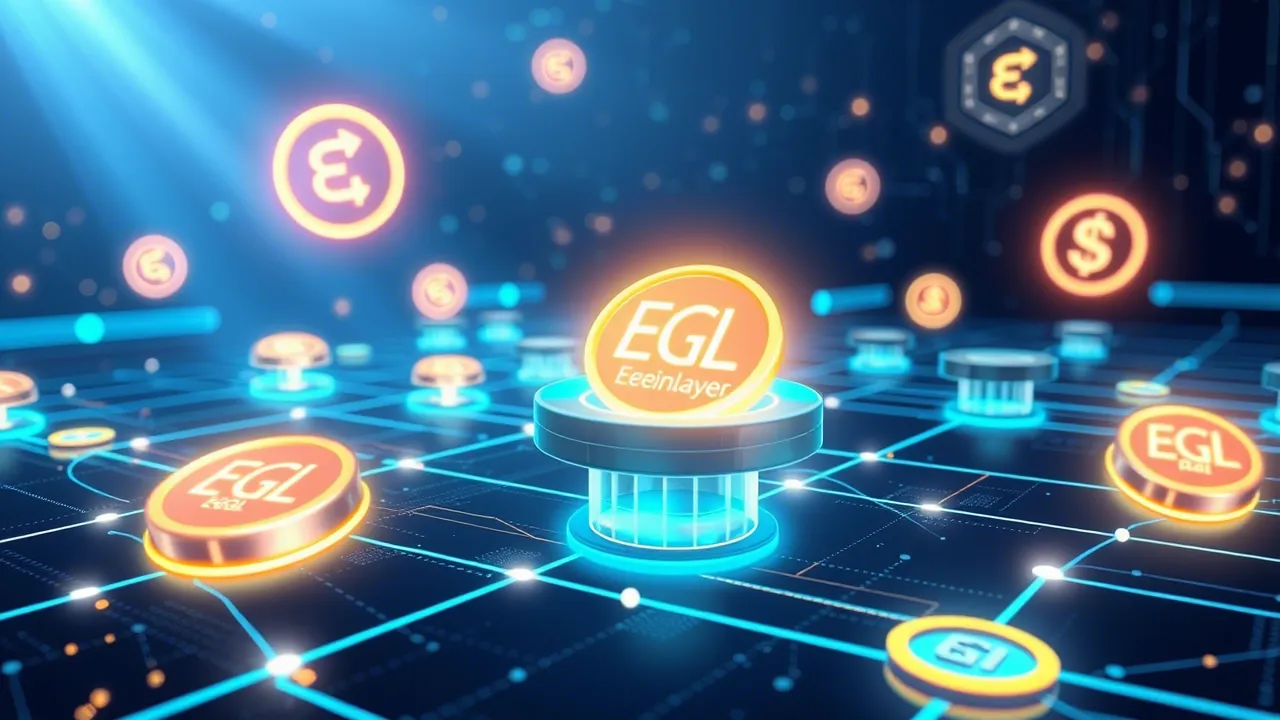Share
The Security and Backing of EigenLayer: A Deep Dive
STORY HIGHLIGHTS

1. Introduction to EigenLayer
EigenLayer is a pioneering restaking protocol built on Ethereum, enabling users to reuse their staked ETH or liquid staking tokens (LSTs) to secure multiple decentralized applications (dApps) and services. This innovative approach amplifies Ethereum’s cryptoeconomic security while offering stakers enhanced rewards. With a robust architecture, strategic partnerships, and significant backing, EigenLayer is poised to revolutionize decentralized infrastructure by providing a "marketplace for trust" that connects restakers, operators, and Autonomous Verifiable Services (AVSs).
The protocol’s ability to extend Ethereum’s security to a wide range of services has attracted attention from investors and developers alike, positioning EigenLayer as a key player in the decentralized finance (DeFi) ecosystem.
2. Security Model of EigenLayer
At the core of EigenLayer lies its restaking mechanism, which allows users to restake their ETH or LSTs via EigenLayer’s smart contracts to secure Actively Validated Services (AVSs). These services include oracles, data availability layers, and cross-chain bridges, all of which benefit from Ethereum’s proven security without needing to replicate its costly infrastructure.
The EIGEN token is central to EigenLayer’s security framework. Designed as a universal intersubjective work token, EIGEN addresses faults in decentralized tasks that are not objectively verifiable on-chain but are identifiable off-chain by multiple observers. AVSs are required to stake EIGEN tokens in amounts exceeding the potential cost of malicious actions, creating a strong economic deterrent against faults.
"EIGEN is designed to resolve faults in decentralized tasks that are agreed upon by multiple external observers. Unlike traditional tokens that focus solely on objectively verifiable tasks, EIGEN addresses faults that may not be provable on-chain but are clearly identifiable off-chain."
EigenLayer employs a dual-token model to ensure stability across its ecosystem. The EIGEN token is primarily used for staking and securing services, while other tokens may support DeFi activities. This separation prevents disruptions in staking from impacting DeFi users, enhancing overall system reliability.
A significant security enhancement is the upcoming slashing mechanism, scheduled for launch on April 17, 2025. Slashing allows for the penalization of malicious actors by reducing their staked tokens, creating stronger security guarantees and accountability within the ecosystem.
"EigenLayer’s slashing on mainnet arrives April 17th, enabling AVSs to set custom conditions, manage operators through Operator Sets, and implement Unique Stake Allocation—creating stronger security guarantees with targeted accountability."
3. Backing and Support
EigenLayer has secured substantial backing, reflecting strong confidence in its security model and potential to transform the DeFi landscape. The protocol received a $100M investment from Andreessen Horowitz (a16z), a leading venture capital firm known for its investments in blockchain and technology innovations. This funding underscores EigenLayer’s innovative approach to decentralized security and its role in expanding Ethereum’s ecosystem.
"With robust architecture, strategic partnerships like Binance and Renzo, and a $100M backing from a16z, EigenLayer is set to revolutionize decentralized infrastructure."
EigenLayer has also formed strategic partnerships with major industry players such as Binance and Renzo, further solidifying its position in the DeFi space. These partnerships enhance the protocol’s credibility and provide access to broader networks and resources.
The protocol’s Total Value Locked (TVL) stands at an impressive $9.7B, as reported by the EigenLayer Official Website. This significant TVL indicates strong trust and participation from the community, as users stake substantial assets to secure AVSs and earn rewards.
| Metric | Details |
|---|---|
| Investment | $100M from Andreessen Horowitz |
| Partnerships | Binance, Renzo |
| Total Value Locked (TVL) | $9.7B |
4. Ecosystem and AVSs
EigenLayer’s ecosystem is rapidly expanding, with over 100 AVSs in development, as noted on the EigenLayer AVS Ecosystem. These services leverage EigenLayer’s security framework to provide trustless innovation across various use cases, including:
- Oracles: Secure data feeds for dApps, ensuring reliable external data integration.
- Data Availability Layers: Such as EigenDA, which ensures data availability for layer-2 solutions, enhancing scalability.
- Cross-Chain Bridges: Facilitating secure asset transfers between different blockchains, improving interoperability.
These AVSs benefit from Ethereum’s cryptoeconomic security through EigenLayer’s restaking mechanism, allowing them to operate efficiently without building their own security infrastructure. For instance, EigenDA, a prominent data availability layer, integrates with EigenLayer to enhance its reliability and security, as highlighted in the Nansen Article.
The ecosystem’s growth is evident in the 56 AVSs already listed with logos and the additional services in development, demonstrating the trust placed in EigenLayer’s security model.
"EigenLayer is a protocol built on Ethereum that introduces Restaking, a new primitive for Web3 builders that provides a 'marketplace for trust' bringing together Restakers, Operators, and Autonomous Verifiable Services (AVSs)."
5. Conclusion
EigenLayer represents a significant advancement in decentralized security, leveraging Ethereum’s proven cryptoeconomic model to secure a diverse array of services. Its restaking mechanism, combined with the EIGEN token’s role in addressing intersubjective faults, creates a robust and scalable security framework. The protocol’s dual-token model and upcoming slashing mechanism further enhance its reliability and accountability.
With substantial backing from investors like Andreessen Horowitz, strategic partnerships with Binance and Renzo, and a growing ecosystem of over 100 AVSs, EigenLayer is well-positioned to become a cornerstone of decentralized infrastructure. As the protocol continues to evolve, it promises to deliver enhanced security and rewards for stakers, operators




